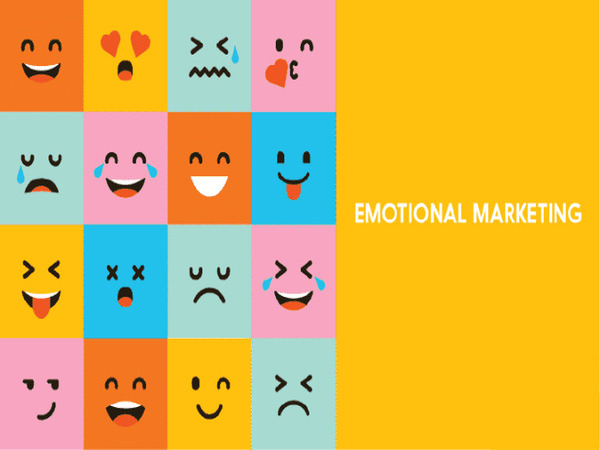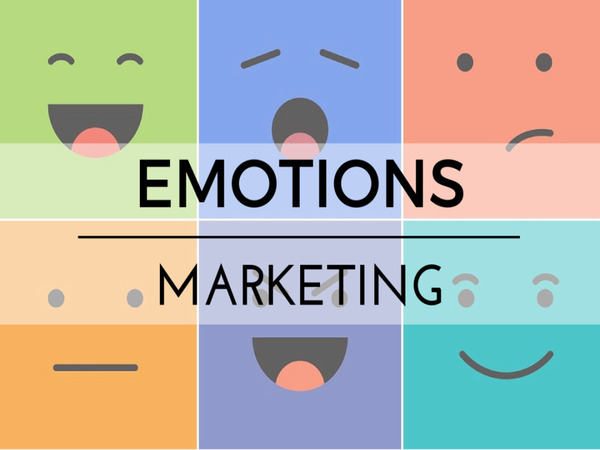In the competitive world of marketing, attracting and retaining customers goes beyond just the quality of a product or service. Emotional marketing has become a crucial strategy for businesses to build lasting relationships with customers. By touching on emotions, brands can convey deep messages, create a strong impression, and increase consumer loyalty. So, what is Emotional marketing and how can it be applied effectively? Let’s find out with Genfarmer in this article!
Common Emotions Used in Emotional Marketing

In emotional marketing, brands often leverage various types of emotions to create a powerful impact on purchasing decisions. Below are the most common emotions used in Emotional Marketing.
Joy and Happiness
Joy and happiness are positive emotions that help brands build a friendly image and create goodwill with customers. Campaigns using these emotions often focus on bright imagery, cheerful music, and inspiring messages. Brands like Coca-Cola or McDonald’s frequently apply this strategy to create a positive connection, making customers feel happy and more fond of their products.
Sadness and Empathy
Touching stories, inspired by everyday life or special circumstances, can easily reach the hearts of viewers. Sadness helps brands express human values, convey meaningful messages, and encourage empathy from customers. Charity fundraising campaigns, environmental protection, or social awareness initiatives often leverage this emotion to create a strong viral effect.
Annoyance and Anger
Anger or annoyance can be a catalyst for change. In Emotional Marketing, many brands leverage outrage to raise awareness about social issues like injustice, environmental pollution, or human rights. Campaigns with this emotion are often powerful, calling for action and creating positive change in the community.
Fear and Anxiety
Fear is one of the powerful emotions that can influence human behavior. Many marketing campaigns use this feeling to warn about potential risks and motivate customers to take action. For example, insurance, health, or traffic safety brands often leverage anxiety to persuade customers to use their products or services as a means of protecting themselves and their families.
Passion and Pride
Passion and pride help customers feel motivated and deeply connected to a brand. Sports, technology, or luxury fashion brands often use this emotion to foster loyalty and encourage customers to express themselves. Inspiring marketing campaigns like Nike’s “Just Do It” slogan are prime examples of leveraging passion to drive action.
Considerations When Applying Emotional Marketing in a Marketing Campaign

For an Emotional Marketing strategy to be maximally effective, businesses need the right approach, avoiding mistakes that could backfire. Here are important considerations when implementing Emotional Marketing in brand promotion campaigns.
Use stories to attract attention and create empathy
An authentic, relatable story can make viewers feel a natural connection to the brand. Successful brands often tell stories about the customer journey, the value of the product in life, or humanistic messages. When customers see themselves in the story, they are more likely to remember and empathize with the brand.
Leverage the power of visuals and sound to stimulate emotions
Humans primarily process information through sight and sound, so using appropriate colors, videos, and music will help the brand convey emotions more powerfully. A commercial with moving background music, impressive visuals, or captivating visual effects can have a profound impact on the customer’s mind.
Use language skillfully to evoke desired emotions
The choice of words and messages can determine the success of an Emotional Marketing campaign. Short, memorable, and inspiring slogans can stimulate emotions and motivate customers to act. For example, L’Oréal’s slogan “Because You’re Worth It” not only promotes a product but also conveys a message of self-worth, helping customers feel more confident.
Understand the target audience and choose appropriate emotions
Not every emotion is suitable for all customers. Different customer groups have different characteristics, needs, and motivations, so businesses need to conduct thorough research to select the right emotions to stimulate. For example, with healthcare products, feelings of security and trust are paramount, while for sports products, passion and motivation will be key factors.
Implement Emotional Marketing carefully and accurately
Using Emotional Marketing requires subtlety and caution, avoiding overuse or excessive manipulation of customer emotions. If a brand intentionally targets negative emotions too strongly or uses inappropriate emotions, customers may feel exploited and lose trust in the brand. Therefore, the Emotional Marketing strategy must be implemented authentically, transparently, and meaningfully to build a lasting relationship with customers.
Why Emotional Marketing is Effective

Emotional Marketing helps businesses build deep relationships with customers by awakening emotions, creating a strong connection, and making the brand more memorable. So why does Emotional Marketing have such a big influence on consumer behavior?
Creates a strong and lasting impression
Emotions are retained in human memory longer than pure information. When a marketing campaign stimulates the right emotions in customers, they are more likely to remember the brand for a long time. An emotional story not only helps a brand stand out but also makes customers remember it even after the campaign has ended.
Stimulates motivation and creates a spiritual connection with customers
When a brand can touch a customer’s emotions, they feel a sense of harmony and connect with the brand more easily. Inspiring messages can boost motivation, helping customers feel more attached and trusting in the product or service.
Captures attention and creates differentiation in a competitive environment
In a world full of advertisements and information, capturing customers’ attention is becoming increasingly difficult. Emotional Marketing helps brands stand out from a sea of competitors by creating high-impact campaigns that touch customers’ hearts instead of just promoting a product plainly.
Drives action and campaign virality
Marketing campaigns that tap into emotions often have strong viral potential, especially on social media platforms. When content is moving or inspiring, customers tend to share it with friends and family, helping the brand reach more people without a huge advertising budget.
Tips for Building a Successful Emotional Marketing Strategy

Emotional marketing is not just a trend but has become a crucial strategy to help brands make a strong impression on customers. When emotions are evoked correctly, a brand not only attracts attention but also builds long-term loyalty. Below are the key factors that help businesses touch the hearts of their customers.
Understand the audience
To tap into customers’ emotions, a brand must first understand them. This is not just about analyzing demographics, but also about delving deeper into their psychology, interests, fears, and the motivations that drive their behavior. When a business understands what its customers want, it can create messages that touch their emotions and convey brand values most authentically.
Leverage the connection between emotion and color
Color plays a vital role in evoking emotions and influencing purchasing decisions. Choosing a color palette that matches the brand’s message will make the emotional marketing strategy more effective. A brand that wants to create a warm, friendly feeling might use warm tones like yellow or orange, while luxury brands often choose black or white to convey elegance.
Storytelling
People connect more easily with stories than with dry advertising messages. A story isn’t just about a product or service; it can also be about the customer’s journey, the value the brand brings, or the genuine emotions the product evokes. Compelling, authentic, and relatable storytelling will make a brand more memorable.
Create a movement and a community
A successful emotional marketing strategy doesn’t stop at creating media campaigns; it also needs to build a community where customers can share and connect. When a brand encourages customers to participate in movements or meaningful campaigns, they feel like they are part of something bigger. This not only strengthens engagement but also fosters brand loyalty.
Conclusion
Emotional marketing not only helps businesses attract attention but also builds long-term trust and engagement with customers. When brands know how to leverage emotions, from joy and empathy to pride or nostalgia, they can create successful and memorable marketing campaigns. If used correctly, Emotional marketing will become a powerful weapon to help businesses go far in a competitive market.











